Luftwaffe Tropical Flying Helmet LKp N-101
CATEGORY: Version
SKU: 22.GOR.01.02.03.002.000
Estimated market value:
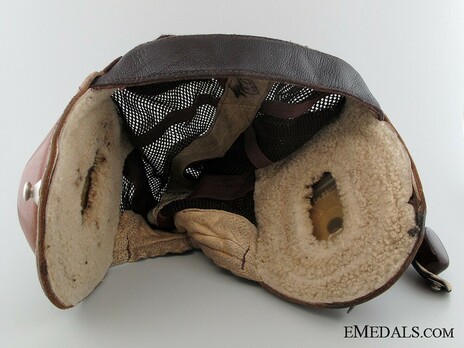
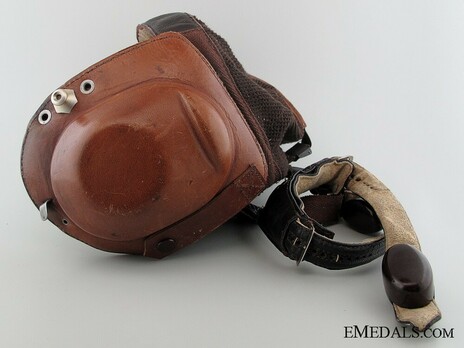
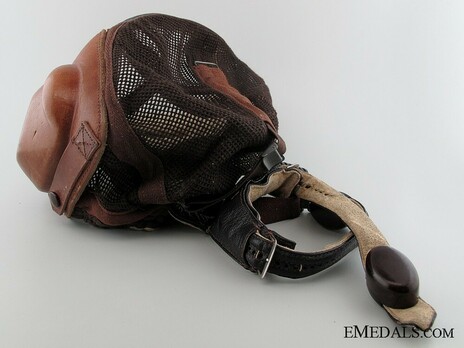
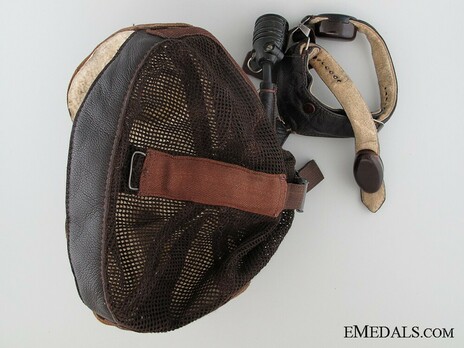
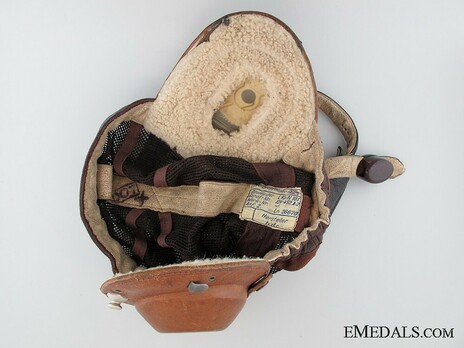
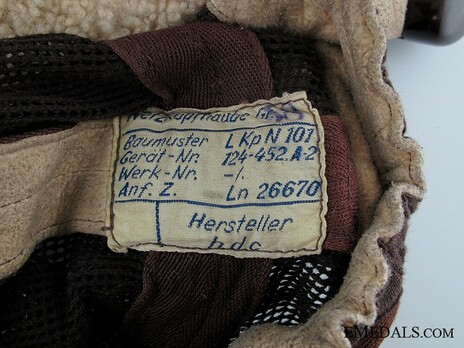
Estimated market value:
WWII Luftwaffe Model L Kp N 101 Summer Flying Helmet - The L Kp N 101 Netzkopfhaube net or mesh flying helmet was one of the most popular Luftwaffe flying helmets of the war. Designed for comfort, it was manufactured completely without a chin strap, relying on the straps of the oxygen mask to secure the headgear ensemble in place. It features fleece lined earphones which are housed in aluminum hemi-spherical domes, containing radio receivers, each earphone with overlaying plastic covers stamped "Ln 26602", with the exterior of the earphones covered in a thick tan leather. Each of the leather earphone covers have raised aluminum posts flanked by eyelets towards the front, a vertical leather strap with snap closures towards the rear and a clip at the bottom. Between the two earphones is a chamois backed leather headband at the front and a chamois backed, elasticized cloth strap at the rear, with the head itself encased in a dark brown, lightweight cotton mesh cap. The top of the mesh cap has an elongated cloth patch housing an adjustable cloth strap, the cap reinforced with brown cotton straps on the exterior. The underside of the mesh cap has a central leather strap lined with chamois, running from the front to the rear, size stamped "58" and stamped "DO7" towards the rear, the manufacturer's label sewn on the chamois at the front, the label inscribed "Netzkopfhaube Gr. / Baumuster L Kp N 101 / Gerät - Nr. 124-452.A-2 / Werk - Nr. - /. / Anf. Z. Ln 26670 / Hersteller / h d c" and size stamped "58". The rear of the helmet has a two-pronged leather strap sewn in place: the shorter strap with a short cable and plug maker marked "BAL GES." and marked "BLK v Fl. 27560", the other strap with a wrap-around adjustable leather neck strap lined with chamois, each side with two Siemens-Halske carbon throat microphones, marked "Mi 4b Ln. 26779-2", along with an adjustable length cloth strap attached to the left end with snap closure, receiving post on the right end, ensuring a snug fit around the neck. Light wear on the chamois, soiling on the fleece on the right earphone, peeling back of the fleece on the outer edge of the left earphone behind the aluminum post. Well-stitched overall, with quality-made, durable parts, near extremely fine.
Luftwaffe Flying Helmets include unlined or fleece or fur-lined models for summer or winter use, respectively. Models come with or without earphones and oxygen mask fittings.
Summer flying helmets were made of brown linen, while winter helmets were made of brown leather.
The flying helmet for summer use without earphones and oxygen mask fittings was referred to as model FK 34. It was used in airplanes without radio equipment and for training purposes. The flying helmet for summer use with earphones, a throat microphone, and oxygen mask fittings has several models. The earliest model is known as model LKp S-53, and can be identified by having oval, molded plastic earphone mountings. The later models, LKp S-100 and LKp S-101 have leather covered earphone mountings with a depression to hold the goggles strap in place.
A rare flying helmet known as LKp S-54 was used by aircraft commanders. It has additional internal features, allowing the wearer greater electronic communication potential.
Luftwaffe flying personnel serving in warmer, tropical climate areas often wore a net top version flying helmet, known as “Netzkopfhaube”, designated as model LKp N-101. This flying helmet differs from other models not only by its thin mesh net top, but also by a lack of a chinstrap.
The flying helmet for winter use without earphones and oxygen mask fittings was referred to as model FK 33. In addition to the same uses as the summer model FK34, this helmet was also worn during the war by ground personnel to keep warm.
The flying helmet for winter use with earphones, a throat microphone, and oxygen mask fittings is similar to the ones for summer use, with model designations LKp W-53, LKp W-100, LKp W-101, and LKp W-54.
Flying personnel on missions over bodies of water often wore a flying helmet cloth cover, either in white or yellow. It was supposed to make it easier to spot downed flying personnel in water.

Comments
Sign in to comment and reply.


Scroll Top